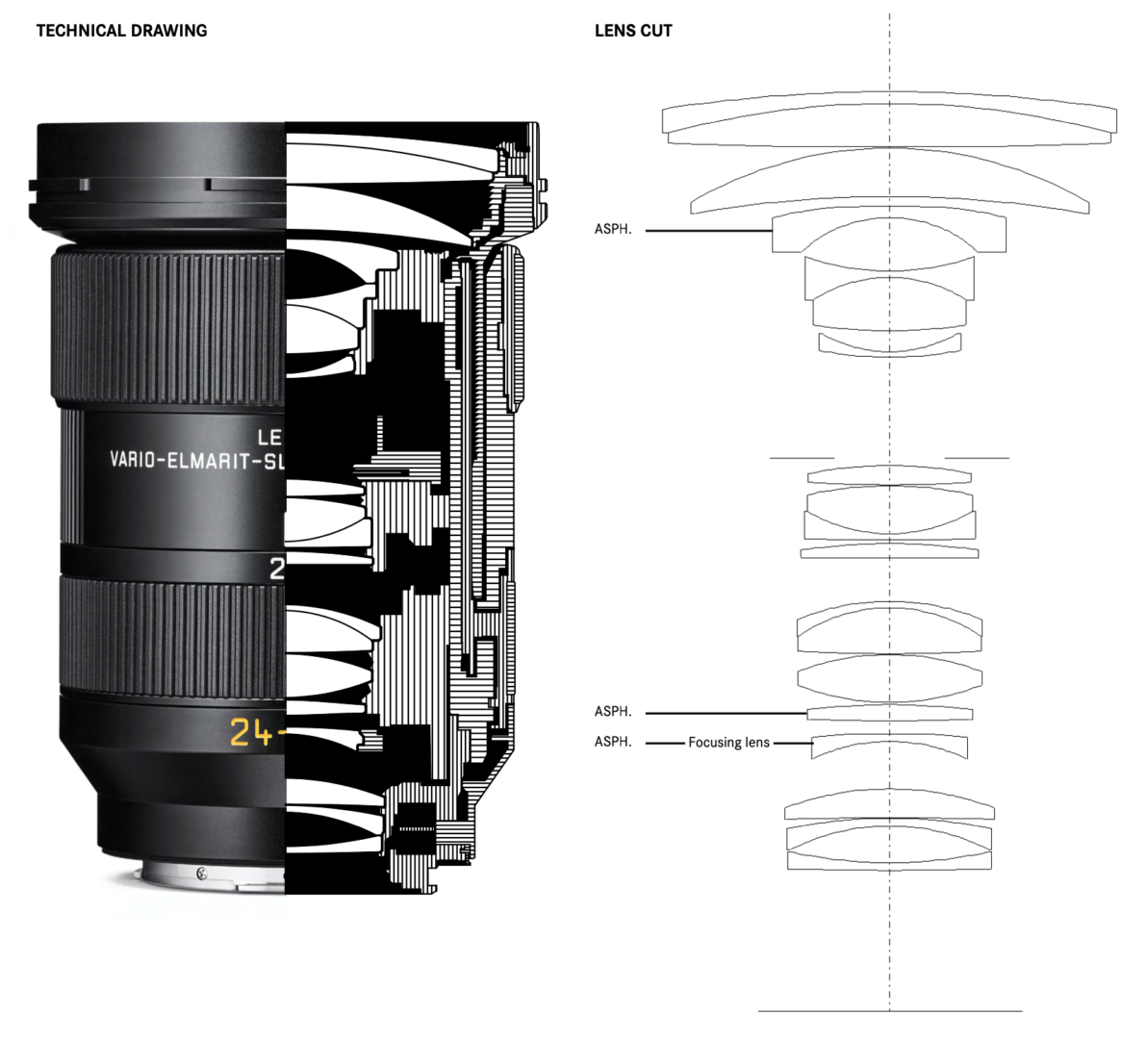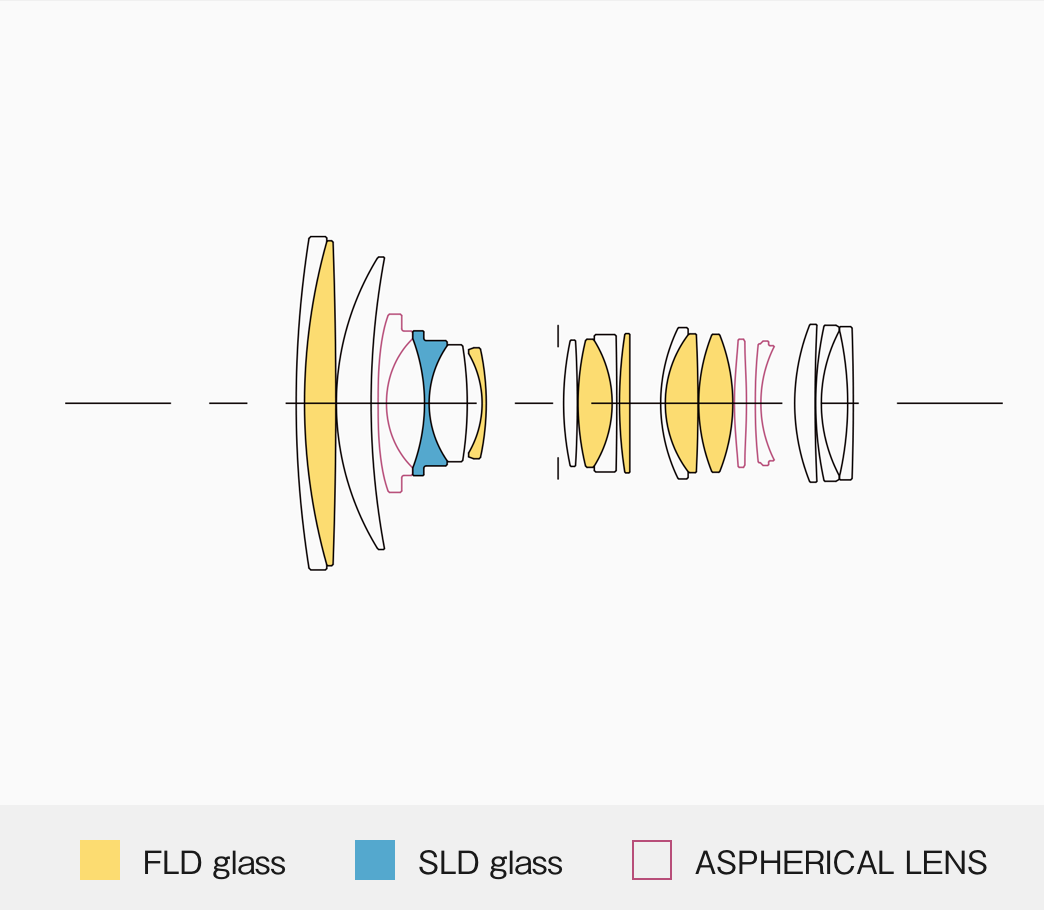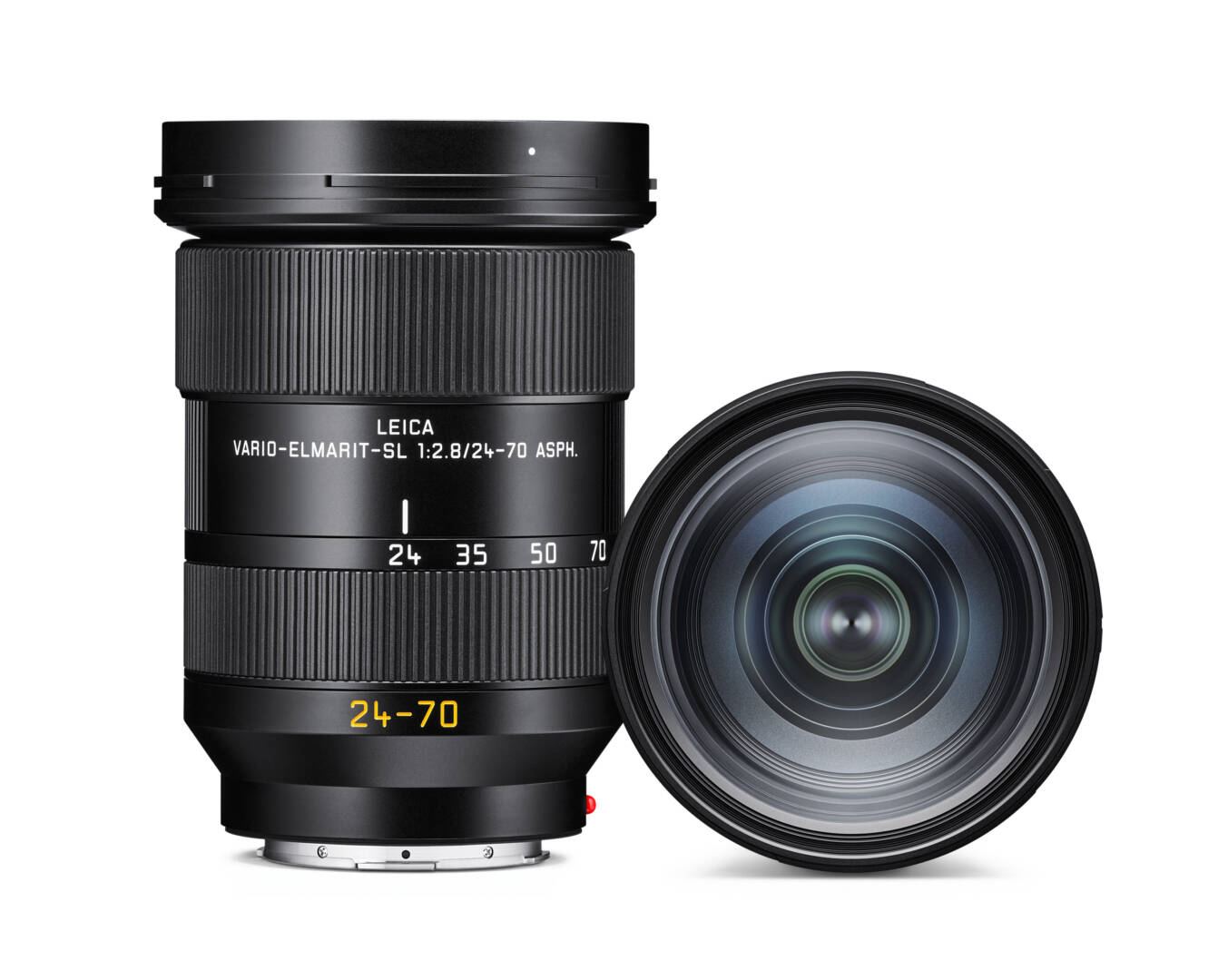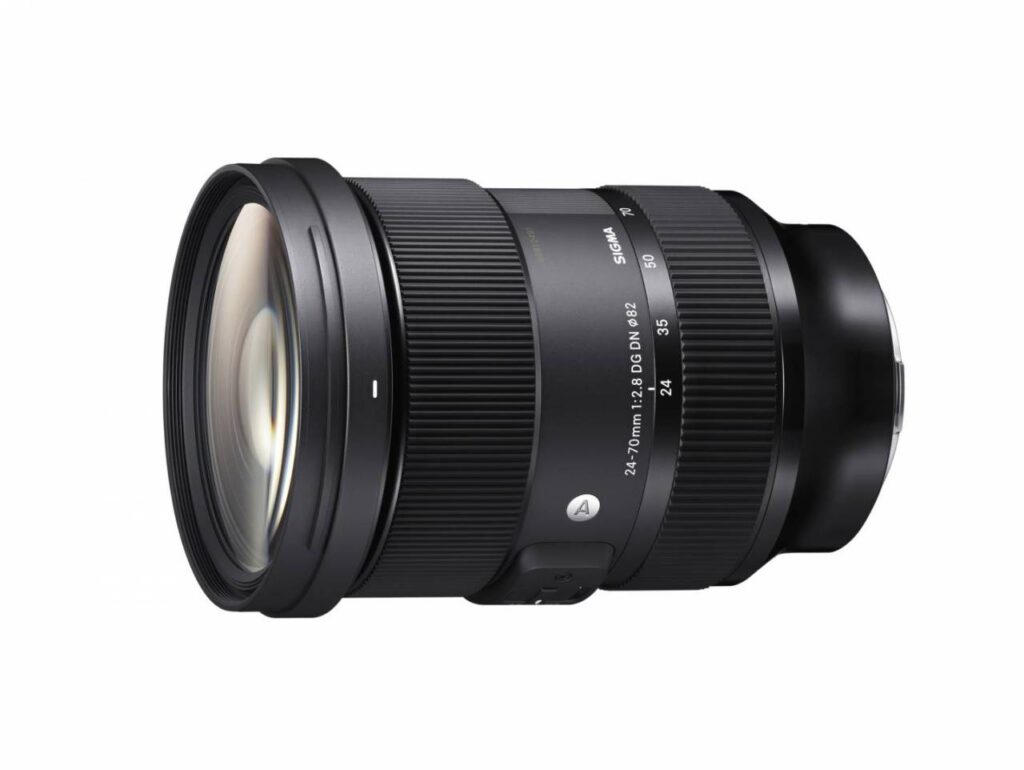At the launch of Leica’s new “budget” 24-70 mm Vario-Elmarit f/2.8 last week, the similarity in specification to the Sigma 24-70 f/2.7 DG DN Art zoom was noticed by industry pundits. It now seems to be accepted by most commentators that the similarities are too great to be a coincidence.
I’m in no doubt this lens is made by Sigma. And, if I’m wrong, I am sure someone at Leica will tell me. The obvious conclusion is that the Leica is a Sigma with a set of new clothes. This is no bad thing because the Art lens is a strong performer. But let’s have a closer look at the specs…
| Feature | Leica 24-70 mm Vario-Elmarit | Sigma 24-70 mm Art |
|---|---|---|
| Elements/Groups | 19/15 | 19/15 |
| Aspherical elements/surfaces | 3/6 | 3/6 |
| Angle of view | 82.3-35.3 | 84.1-34.3 |
| Number of diaphragm blades | 11 (rounded) | 11 (rounded) |
| Maximum aperture | f/2.8 (constant) | f.2.8 (constant) |
| Minimum aperture | f/22 | f/22 |
| Minimum focusing distance | 18-38 cm | 18-38 cm |
| Maximum magnification ratio | Wide 1:2.9 – Tele 1:4.5 | Wide 1:2.9 – Tele 1:4.5 |
| Filter size | 82 mm | 82 mm |
| Dimensions | 88 x 123 mm | 87.8 x 122.9 mm (Ha!) |
| Weight | 856 g | 835 g |
| Weather protection | Dust and water spray proof | Dust and splash proof |
| Lens hood | metal | plastic |
Alliance
Quite apart from the similarities in the internal specification, it always seemed unlikely that Leica would go outside the L-mount Alliance when sourcing a third-party lens. It makes so much sense to stay in the established camp. Yet the differences between the cosmetic appearance of the two versions are probably sufficient to keep Leica fans happy, despite the price difference.
The clean lines of the Leica lens perfectly complement the other made-in-Germany optics in the SL lineup. The removal of the focus mode control is the most obvious change, but the sleek metal housing draws a clear line between the two lenses. This change of material and fewer knobs undoubtedly aids weatherproofing, and this may be one of the biggest positives in favour of the Vario-Elmarit.
Of course, there could be other subtle changes to the optical performance. Leica would have us believe that there is a good old sprinkling of Leica dust in this third-party offering. It is indeed possible that Leica shipped out some secret glass that Sigma isn’t privy to. Or maybe the odd vial of lens-coating potion brewed in the cauldrons of Wetzlar found its way to Japan.
But let’s not get carried away. I am interested in finding out just what has been done to tweak the optical performance (if anything).
Bargain?
Here in the UK, the Sigma 24-70 is currently selling for £1,048, and this looks like a substantial bargain compared to Leica’s 24-70 at £2,300. However, the introduction of a kit bundle with the SL2 and SL2-S (£7,200 and £5,850 respectively) has the effect of knocking £400 off the lens price, bringing it down to an effective £1,900. Yet that is still over £850 more than the Sigma 24-70 Art’s recommended price, which is likely to be more of a moveable feast than Leica’s pretty rock-solid price. The real-world price gap could widen.
While the Leica branding always justifies a premium, not least for the undoubted higher value retention, it will be fascinating to see a detailed direct comparison between the Sigma and Leica lenses. Are the Sigma’s controls smoother in operation than those of the Leica? Is the removal of the AF-MF switch a problem, or is Leica’s cleaner, brand-faithful approach better?
Above all, how does the Leica compare with the Sigma in performance and image quality? That is the crux of the matter. If the Leica returns better performance, case over. But if there is absolutely no difference, then the significant price difference comes into focus.
Which would I choose, given a similar performance? I prefer the Leica version, except for the price. The Leica 24-70 mm has a cleaner, more attractive appearance. It looks more luxurious and sleek, and the metal housing (which results in a slight increase in weight) is of long-term benefit. The metal hood, too, is an undoubted draw.
As Jono Slack pointed out in his review of the Leica f/2.8, the performance is nearly as good as that of the heavier, bigger and much more expensive 24-90 f/2.8-4 SL, which, despite the £3,845 price, isn’t a constant aperture zoom.
On this basis, if you are happy with the slightly shorter 70 mm reach of the new Vario-Elmarit, the new lens begins to look like something of a bargain, even at Leica prices. The Leica name alone will ensure that depreciation is much slower than the Sigma 24-70. When the Sigma has long walked the plank, the Leica will be struggling on, propped up by brand aficionados.
Head and heart
Yes, this is the heart speaking. The head might have a different story. In the real world, that £1,250 price saving if you go for the Sigma is certainly not to be sniffed at.
Nevertheless, Leica has done the right thing by venturing into third-party lens manufacture, building on its long history of outsourcing R and TL lenses, not to mention whole packages such as the current D-Lux and C-Lux models. The relative value between the two 24-70 mm lenses comes down to personal preference and after evaluating how much the Leica brand is worth.
With the D-Lux, for instance, it’s a no brainer. I would always choose the Leica version over Panasonic’s because the price difference is relatively small and is more than repaid over the life of the camera. But, assuming the two 24-70s are equal performers, it remains to be seen if the much larger price gap between these two 24-70 mm zooms will be such a good investment.
What’s your view. Let us know in the comments below whether you’d pay the extra for the Leica 24-70 or just settle for the much cheaper Sigma?
Make a donation to help with our running costs
Did you know that Macfilos is run by five photography enthusiasts based in the UK, USA and Europe? We cover all the substantial costs of running the site, and we do not carry advertising because it spoils readers’ enjoyment. Every amount, however small, will be appreciated, and we will write to acknowledge your generosity.





As I’ve just entered the SL world lately and currently have to decide if I put a Leica 24-70 or a Sigma 24-70 on my SL2S, I do think the Leica has my preference. I think the fact the weather sealing is better and the fact it’s an all metal lens makes it more sturdy in the field.
Erica, I think it’s very much a matter of personal preference. I suspect the performance of both versions is identical, but the metal body and, presumably, greater attention to detail in construction and selection of optics, is a factor in favour of the Leica lens. It will also retain its value better, thus narrowing the gap in the initial purchase prices. It’s all down to what you prefer. I’m sure you will be happy with the Leica version. Mike
The SL 24-70mm reminds me of the annual school drama productions in 1957 when at Green Lane School in Worcester Park Surrey, one chosen ‘play’ was “The Emperor’s New Clothes’. The little lad (I could name him … he had two older sisters at the school) chosen to be the Emperor was naked apart from his underwear, a ceremonial mace and a gold crown … He was actually made to wear his elder sister’s ‘big girl’s bloomers’. The little lad marched majestically off the stage in a procession down the centre aisle and back up to th stage again … very proudly tipping his crown and mace to all the parents in the audience. Another lad then shouted, “Look at the King! … He’s naked!!” … much to the amusement of all. So now I’m thinking the new Leica SL 24-70mm is a ‘big girl’s bloomers’ lens … complete with a Leica crown!
dunk
At least it generated some buzz on the Internet… whereas the recent announcement of the Summicron-SL 28mm was uhhh rather uneventful (certainly compared to the APO Summicron-M 35mm) and seems to have gone by completely unnoticed… FWIW, the performance of the Leica and the Sigma seem to be different (see also reddotforum above). Whether that is sufficient to justify the price difference is a completely different question, one that everybody needs to answer for themselves…
For those willing to sit through a 2hr RedDotForum session on this Lens:
https://www.youtube.com/watch?v=IAxlRBSD2jQ
They do compare the 24-90mm with both the Leica and Sigma 24-70mm.
Sample gallery on dpreview:
https://www.dpreview.com/samples/6202078261/leica-vario-elmarit-sl-24-70mm-f2-8-asph-sample-gallery
I would like a three way competent comparison of the Panasonic, Sigma and Leica lenses.
Possible that Sean Reid would do that type of comparison. Will keep an eye out over the next month or so.
I agree that Sean would be the best person but he might find testing a lens twice a bit repetitive stress.
Dpreview has sample image gallery so their review cannot be too far off.
I can only see one review on YouTube about the lens and that is a commentary rather than a hands on video. Perhaps that’s a company decision because reviewers would simply repeat that the lens is no more than a re-badged Sigma. And there’s nothing more to be said. Or possibly the reviews will appear soon as the lens is sent out.
Slightly off topic but I personally don’t agree with the opinion voiced in previous articles (about this lens) that constant aperture is only of benefit for videographers. I find it very useful for stills as well and having a constant aperture does not force me to change my shooting habits which I appreciate very much.
The Sigma one is currently being sold as a kit lens by Leica Australia (they can’t be alone).
My guess is that the thinking is the new lens provides an attractive zoom lens at a price point that the Leica sales person can sell as part of an SL2/ SL2S kit without having to explain why the lens says Sigma.
If an enthusiast looks and says ‘I can get a similar quality lens for less without the Leica name badge’ then that’s what informed choice (and the L Mount Alliance) is all about.
But it might still be worth paying more for the metal barrel now and think on the increased residual value down the road.
PS, the AUD prices from Leica for the two kits are $8,990 for the SL2 with Sigma Art 24-70 f/2.8 lens versus $10,590 for the same body wit a Leica 24-70 f/2.8…
I know this is irrelevant – grey with a trunk – but why must these lenses look so massive and so ugly, particularly compared with M (and R) lenses of the past, which had/have the aura of fine optical instruments? No doubt they perofrm admirably but the lenses for the SL2 in particular remind me of those joke cameras we had in Christmas stockings years ago that squirted water at an unsuspecting subject. And they look so plasticky, even when made of metal – perhaps they got the idea from Mercedes dashboards in the 1960s, when they found a way to make real wood veneer look like artificial wood? OK, I’m sure it’s just me being difficult …
“… but why must these lenses look so massive and so ugly, particularly compared with M (and R) lenses of the past …” Partly because L mount AF lenses have more ‘innards’ i.e. the AF motor mechanism … and they are also telecentric designs enabling better edge definition.
But comparing (say) a 35mm AF Nikkor with the SL equivalent … I do realise that everyone’s out of step except me but even so …
Those older Nikkossr were built and designed for film and DSLR use, and the designs often have issues on the new mirrorless cameras. So they need to be redesigned, and that seems to mean extending the lens’ designs to get better performance. At least at the present state of the art.
A more apt comparison would be the new Nikkor Z 35 and the SL equivalent. Not so different in size.
Thanks for the explanation – I hadn’t realised that DSLR and mirrorless cameras had such different optical requirements. So if there was ever to be an autofocus M (sorry if this causes some to shudder), it would be saddled with similar monster lenses? Asking for a friend …
.
Tony, “..if there was ever to be an autofocus M … it would be saddled with similar monster lenses?” ..not if Leica did the autofocus sensibly, as with just motorising the existing M mount.
SLR lenses were made with a -l-o-n-g- distance between the rear of the lens (its mount) and the film or sensor, to give room for the camera’s mirror to swing up and out of the way. A typical ‘flange-back’ (mount to film or sensor) distance would be around, say, 46.50mm (in that case, for Nikon SLRs).
Mirrorless cameras – not having a mirror which swings up and out of the way – can ..and do!.. have their lenses mounted much closer to the sensor, e.g; 19.25mm for micro-four-thirds cameras, and only 18.00mm for Sony full-frame ‘E’ mount cameras, and only 16mm for the new Nikon ‘Z’ mirrorless mount!
SLR lenses thus need a long ‘spacer’ mount to add distance between a mirrorless camera’s mount and the actual distance which the SLR lens needs for proper focusing. And if the SLR-lens-design were just re-jugged to fit into a ‘shallower’ mirrorless mount, the mirrorless cam’s sensor probably wouldn’t be able to accept the lens’ sharply-angled peripheral light rays, as – unlike film – sensors generally need light to reach the sensor from straight ahead, and not from acute angles at the edges (because of the way that sensors are manufactured).
HOWEVER, the ‘flange-back’ distance of M lenses is only 27.80mm ..much shorter than SLR lenses’ distance, and digital M cameras have sensors which have already been optimised to accept acute-angle peripheral rays (so that older ‘made for film’ lenses can still be used on new Leicas) so there should be NO problem of needing bigger, re-designed M lenses to fit an autofocus M camera which simply had a movable mount (rather like the autofocus Contax AX, which took ordinary lenses, and just had a movable film plane) ..unless new M ‘autofocus’ lenses included image stabilisation glass ..which WOULD make them bulkier.
Hope your friend can understand that gobbledegook!
This is what I think every time they release these and why I’m very unlikely to buy them. I’d rather use M lenses on an SL body.
Personally I certainly don’t find the SL lenses ugly but yes, they are definitely massive, too big and too heavy, especially when you add them to a body that is already 200g heavier than the competition, Leica themselves with the APO-Summicron-M 35mm f/2 ASPH have shown that it is possible to deliver (from a practical view) the same image quality in a much smaller and lighter package (the weight difference is 430g…), also Sony with their very well received 35mm GM has shown that it is possible to deliver a (faster) high quality lens with (better) autofocus in a package that is more than 200g lighter… and you can put it on the A7c body that is more than 400g lighter than the SL2 bodies…
I remember the R 24mm f/2.8, which was a Minolta design, and vastly better than anyone else’s (other than Minolta’s) 24mm f/2.8. Leitz didn’t go to Minolta to save money, but in that case just to get the best performing 24mm f/2.8 lens possible at the time.
..As had done Leitz when using the Schneider / Taylor-Hobson Xenon 50mm f1.5 of 1936 and then the Schneider Super-Angulon designs – 1958 onwards – for Leitz’ early M-fit 21mm lenses ..and, of course, adapting the Zeiss 15mm Hologon for the Leica M5 in 1972.
So Leitz/Leica’s use of other people’s designs goes back much further – back to the 1930s – than just the more recent co-operation with Minolta.
And all those Leica-labelled lightmeters for the M (film) cameras were made by the separate company Metrawatt. Outsourcing/borrowing/licensing/joint-development is nothing new for Leica.
I am looking forward to seeing a comparison text between these two lenses, the Leica and Sigma 24-70s. I know many people go into raptured about, for instance, the D-Lux and claim that it is an improvement on the Panasonic version. I just don’t see that. The performance is near identical except, perhaps, in terms of jpeg creation where we presume Leica has added its stardust. But the price difference is so small, especially compared with the vast gulf between these lenses, that the Leica D-Lux is actually a sensible choice.
Let’s hope we are looking at it through the wrong end of the telescope. It could be that Leica saw the Sigma 24-70 as a really good performer and that’s what tipped the decision. They would surely not have chosen it had it been otherwise. Again, though, this brings us back to why not choose the Sigma and pocket the difference?
Whatever the reason, it is so nice to have all these options and a variety of prices. The L-mount system is shaping up to be a real competitor in the market. The lure of Leica is always there (as an aspiration, perhaps) but the entry point is competitive with Panasonic and Sigma cameras and lenses. All good.
I own the Elmarit-R 24mm f2.8. Although some people have a tendency to talk down the lens because it is a Minolta design I personally think it is on par with other R lenses I own. It is a very fine lens IMO.
This really isn’t too bothersome – after all, Leica have outsourced their zoom lens manufacturing many times before. One thing it does say is that Sigma did a wonderful job on their lens, giving us “true Leica quality” at a fraction of the price.
One might wonder, though – did Leica have a hand in the Sigma design? Was this a collaboration?
As to value retention, we shall see. Sometimes, certain lenses get “marked” as inferior versions by the general photographic public. Several of the R system zooms are that way now.
PS … and let’s not forget Leica’s lens collaborations with Kyocera and Angénieux … the latter’s Leica zoom lenses are very sought after for their colour rendition.
I think I would stick a leica label over the sigma name and enjoy the astute savings.
Or I probably purchase the Panasonic S Pro 24-70 if ai was in the market for a 24-70 based on test reviews. But I am not interested in this range of focal lengths.
I have been told they the Panasonic S Pro 24-70 is inferior to the Sigma ans, therefore, to the Leica. But so far that’s hearsay and you’d need to do some research.
it’s a ‘no brainer’ choice … I’d definitely buy the Sigma if I needed a 24-70mm L lens because the Leica SL 24-70 appears to be a “badge and barrel engineered” offering to attract those Leica diehards who will always buy e.g. a Leica D Lux 7, instead of the same spec. Panasonic LX 100 II. I’m a Leica SL 601 owner and rather than upgrade to the SL2, settled for an ex demo £1800 Panasonic S1R … a saving of over £3K on the new SL2 price. I still have my Leica SL 24-90mm and a selection of Leica R, M and LTM lenses … all of which can be used with the S1R via adapters … thus enabling Leica Society image submissions … another important consideration for TLS members. Leica ‘badge engineering’ commenced many years ago with the Minolta partnership which apart from camera collaborations also included Leica ‘R’ lenses e.g the MR 500/8 Telyt which is optically identical to the Minolta 500/8 Rokkor. Similarly, the Leica Vario R Elmar 35-70/3.5 was a Minolta design … as were the Leica Vario R 70-210/4 and 75-200/4.5 zoom offerings. I also recall your Vario R Elmar 28-70/3.5-4.5 review Mike … another ‘badge and barrel engineered’ Sigma offering … thus the current SL 24-70 collaboration is not unprecedented.
The difference in angle of view is interesting. I am not sure whether I understand why it is different…
I would not read too much into that – lens specs have always been rounded one way or another and not all full frame sensors are exactly 24mmx36mm either. It may be down to Sigma and Leica using different rounding approaches or sensor dimensions.
One thing that is disappointing – but not surprising given its origin – is that the Leica 24-70 2.8 will also zoom the “wrong way”. If you have other Leica zooms, this is likely going to be the source of endless frustrations and missed shots. I experience a similar situation with a Sigma 100-400 used on my Nikon DSLRs, next to Nikon zooms (70-200 2.8 and 24-70 2.8). Muscle memory is strong and it is easy to start zooming the wrong way, especially if swapping regularly between bodies with different lenses.
If you’re not into action photography and/or if you have no Pana/Leica zoom, this may not be an issue.
Interesting! Another factor effecting price could be quality control. Are the Leica branded lenses being built in a dedicated assembly operation? Are they being individually inspected/tested; in Germany perhaps? Is there a high rejection rate?
All astute points, Brian, and I am sure Leica would love us to think that the Leica version is made up at the front of the plane, with all the Sigmas crowded together in the tourist cabin. But I wonder…